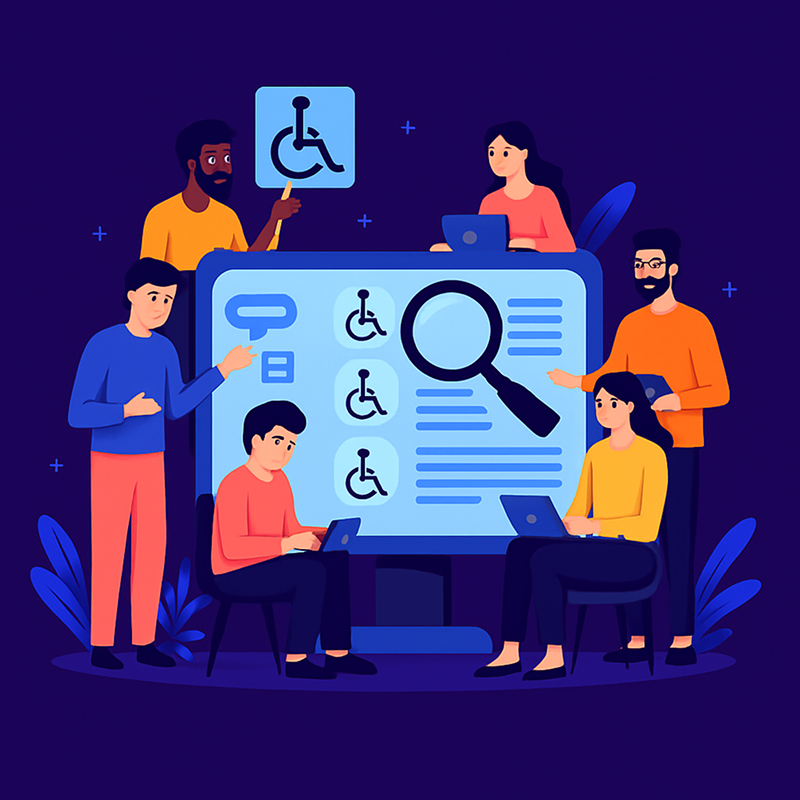An Accessible Brand Is More Than a Compliant Website
For many organizations, the journey to accessibility ends with a WCAG-compliant website. The audit is passed, the accessibility statement is published, and the box is checked. But in 2025, this is no longer enough. A truly accessible brand understands that compliance is the starting point, not the finish line.
Your website is just one touchpoint in a larger brand ecosystem. If a user with a disability can navigate your site but can't use your product, understand your marketing emails, or get effective customer support, is your brand truly accessible?
Building an accessible brand requires a holistic commitment to inclusivity that permeates every facet of your business. Here’s where to focus your efforts beyond the code.
1. Product Design and Development
Accessibility cannot be an afterthought in the development cycle. It must be a core requirement from the earliest stages of product design.
- Inclusive by Design: Your product teams should be asking critical questions from day one. Is there a non-visual way to perform key actions? Does the UI work with increased text sizes and high-contrast modes? Are new features tested with users who rely on assistive technologies?
- Wawsome’s Approach: At Wawsome, our solutions are built with this principle at their core. We believe that digital tools should be inherently usable by everyone, which is why our accessibility widget is designed to integrate seamlessly without compromising the user experience.
2. Customer Support and Communication
An accessible website can be undermined by inaccessible customer support. When a user needs help, they should be able to receive it in a format that works for them.
- Multichannel Support: Offer support through various channels beyond a standard phone call. This includes email, accessible live chat, and potentially video relay services for users of sign language.
- Training is Key: Your support agents must be trained to understand the needs of users with different disabilities. They should be familiar with assistive technologies and equipped to provide clear, patient, and effective assistance.
3. Marketing and Content
Every piece of content your brand produces is an opportunity to demonstrate your commitment to accessibility. This goes far beyond the blog posts on your website.
- Accessible Documents: Are your case studies, white papers, and user manuals available in accessible formats? PDFs, for example, must be properly tagged to be readable by screen readers.
- Email Marketing: Ensure your email campaigns are designed with accessibility in mind. Use a logical reading order, high-contrast text, and descriptive alt text for all images.
4. Company Culture and Hiring
The most effective way to build an accessible brand is to build an inclusive team. When people with disabilities are part of your organization, their insights and experiences naturally shape a more accessible output.
- Hiring Practices: Ensure your job application process is fully accessible, from the online portal to the interview itself.
- Internal Tools: The tools your team uses every day—from project management software to internal communications platforms—should also be accessible. This fosters an inclusive environment and ensures all employees can contribute to their full potential.
From Compliance to Culture
An accessible brand doesn't just do accessibility; it is accessible. It’s a shift from a technical requirement to a cultural mindset. By extending your focus beyond your website to your products, your people, and your processes, you build a brand that is not only compliant but also genuinely and authentically inclusive.
Ready to Start Your Journey?
Understanding where your website stands is just the first step. Use Wawsome’s free Site Scanner to get an instant analysis of your site's accessibility. For long-term success, our Accessibility Monitor feature helps you maintain compliance and ensure your brand remains inclusive as it grows. Take control of your accessibility and see how your website scores today.
